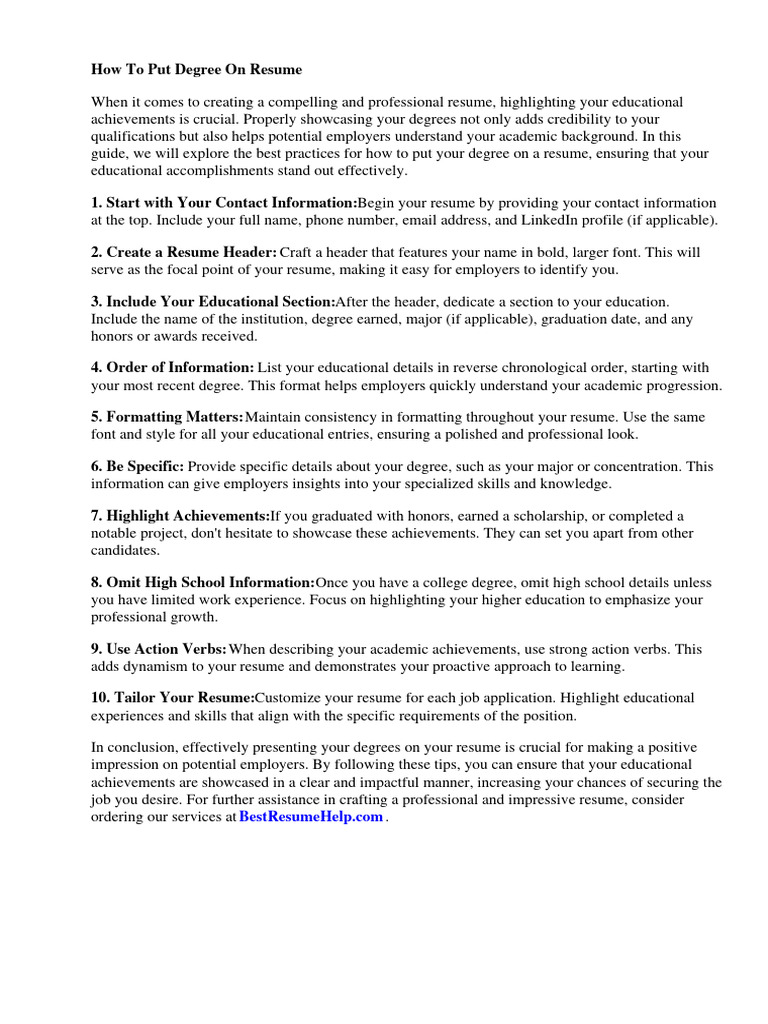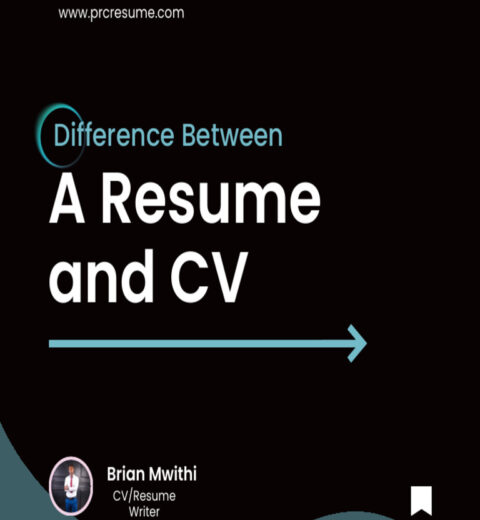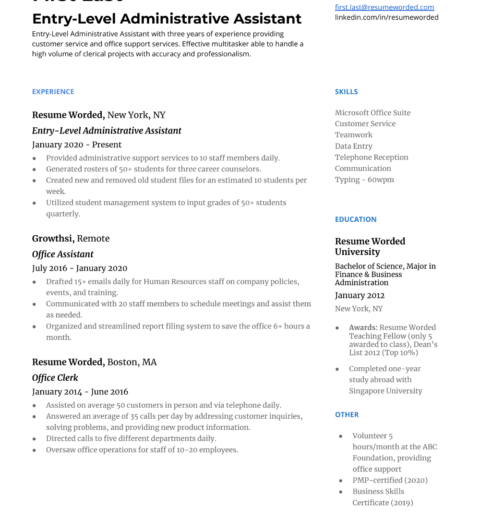Including a degree on a resume is an essential aspect of presenting oneself as a qualified candidate in the competitive job market. The degree signifies not only the completion of an academic program but also the acquisition of critical skills and knowledge that contribute to professional success. However, many applicants grapple with how to effectively showcase their educational background within the confines of their resumes. This article aims to illuminate the most effective strategies for presenting a degree on a resume, accompanied by comprehensive formatting tips to enhance clarity and impact.
Understanding the Importance of Your Degree
A degree is often more than just a piece of paper; it represents a significant investment of time, effort, and intellectual capacity. Employers frequently regard educational qualifications as a reflection of an individual’s diligence, commitment, and ability to meet challenges. The relevance of your degree can vary significantly based on the industry, the position you are applying for, and the level of education achieved. For instance, a bachelor’s degree might be deemed essential for entering many fields, while in others, such as academia or specialized professions, a master’s or doctorate may be imperative.
Choosing the Right Layout
When structuring a resume, the layout plays a pivotal role in how contents are perceived. The educational section should be clearly defined and conspicuous, typically located below the work experience section or near the top of the resume for recent graduates. The choice between a chronological, functional, or combination layout will significantly impact how the degree is presented. A chronological format lists degrees in reverse chronological order, emphasizing the most recent achievements first. This format is generally preferred by employers as it presents the most relevant qualifications upfront.
What to Include in the Education Section
- Degree Title: Always include the full title of your degree, such as “Bachelor of Science in Biology” or “Master of Arts in English Literature.” Avoid using abbreviations unless they are widely recognized.
- Institution Name: Clearly indicate the name of the institution where you obtained your degree. The reputation of the institution can have varying significance in different fields, so it is essential to include this information.
- Location: Provide the city and state where the institution is located. This information can be beneficial, especially if the school is well-regarded in the industry relevant to your job search.
- Graduation Date: Include the month and year of your graduation. If you are a recent graduate, you may consider including your expected graduation date. For individuals with degrees earned long ago, including just the year is often sufficient.
- Honors and Distinctions: If applicable, mention any honors received, such as cum laude, magna cum laude, or relevant awards. These accolades can enhance your credibility and differentiate you from other candidates.
Formatting Tips for a Professional Appearance
Visual appeal is paramount in a resume. Adhering to a consistent formatting style can significantly enhance readability and professionalism:
- Font Choice: Opt for a professional font that is easy to read, such as Arial, Calibri, or Times New Roman, in a size that is neither too large nor too small (typically 10-12 points).
- Headings: Utilize bold headings for the education section to make it stand out. This aids in quick navigation and draws attention without overwhelming the reader.
- Bolding and Italics: Use bold or italics sparingly. Bold your degree and institution to emphasize key elements. Italics may be used for honors or additional details that warrant softer emphasis.
- Bullet Points: For clarity, especially if you include relevant coursework or projects, consider using bullet points to neatly organize information.
Tailoring Your Educational Experience
The ability to tailor your resume for each application cannot be overstated. When applying for positions, consider how your degree relates to the job description. If specific coursework or projects align with the job’s requirements, list them under your degree to bolster your relevance. Furthermore, including extracurricular activities or relevant coursework can provide a more holistic view of your capabilities, especially for recent graduates with less professional experience.
Beyond the Degree: Additional Credential Considerations
In some fields, additional certifications, workshops, or professional development courses can complement your degree and provide further credence to your expertise. These should ideally be listed in a “Certifications” or “Professional Development” section, highlighting ongoing learning and adaptation to industry trends.
Your Degree in the Context of the Application
As crucial as it is to list your degree, profundity lies in framing it within the context of your overall narrative. Employers are interested not just in educational credentials but how these experiences contribute to your ability to perform in the role. Articulate how your academic background has prepared you for the job at hand—this could tap into various components, from critical thinking and problem-solving skills to collaborative projects undertaken during your studies.
In summary, placing your degree on a resume is more than a routine element of job applications. It reflects your qualifications and tells a brief narrative about your educational journey, ambitions, and professional ethos. By adhering to best practices in formatting and presentation, you can illuminate your academic credentials, thereby enhancing your appeal to potential employers and fortifying your position in a crowded job market.




